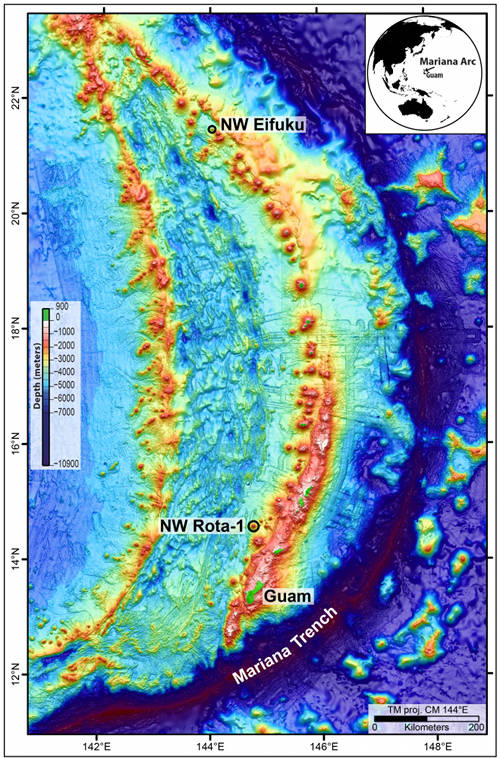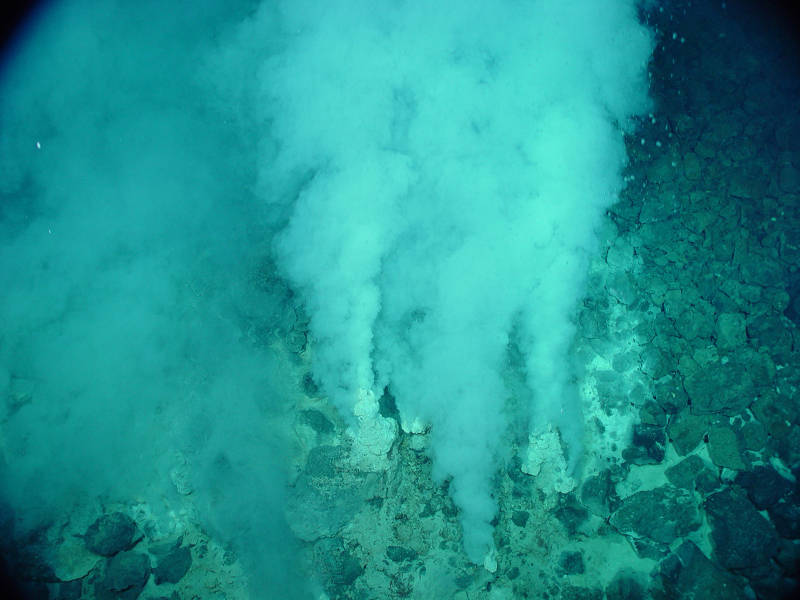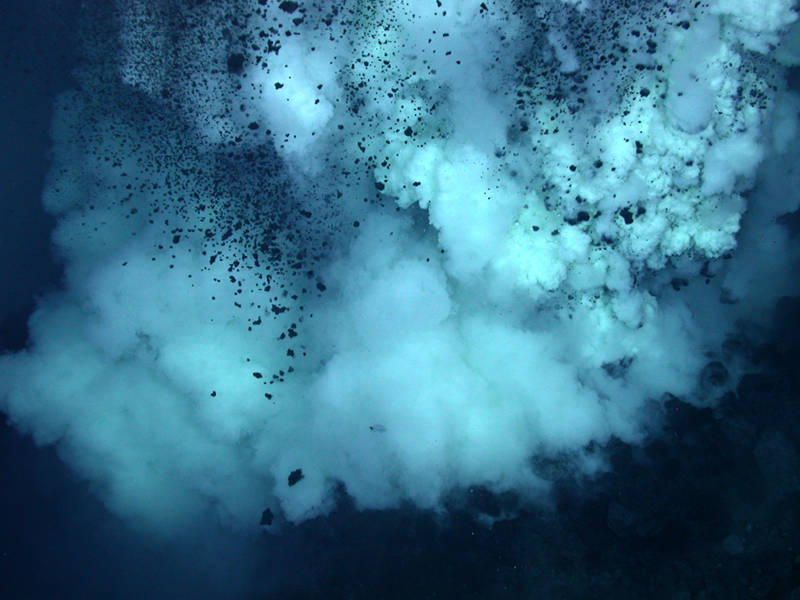
By Craig Moyer - Western Washington University
Bill Chadwick - Oregon State University and NOAA Pacific Marine Environmental Laboratory
The “Submarine Ring of Fire 2014 – Ironman” expedition will have two parts.

Bathymetric compilation map of the Mariana Arc area showing the location of the two focus sites on the expedition, NW Eifuku and NW Rota-1, as well as the Mariana Trench. Multibeam bathymetry (120-meter grid-cell size) is overlaid on satellite altimetry data. Image courtesy of Submarine Ring of Fire 2014 - Ironman, NOAA/PMEL, NSF. Download larger version (jpg, 11.1 MB).
The first part is focused on iron-oxidizing bacteria at hydrothermal vents (the “Ironman” part) and is funded by the National Science Foundation (NSF). This effort is focused on understanding the ecology of microbial mat systems driven by a novel class of microbes called Zetaproteobacteria. This part of the expedition is led by a team from Western Washington University, Bigelow Marine Labs, and University of Delaware.
The second part of the expedition builds upon previous “Submarine Ring of Fire” explorations lead by NOAA/ Pacific Marine Environmental Laboratory and is funded by the NOAA Office of Ocean Exploration and Research. This work will be focused on understanding how the emission of carbon dioxide (CO2) from active submarine volcanoes acidifies the local marine environment and how that in turn affects the unique biological communities living around the vents.
This expedition will be conducted on the research vessel Revelle (operated by Scripps Institute of Oceanography), with dives using the Jason remotely operated vehicle (ROV), operated by the Woods Hole Oceanographic Institution and the NSF-funded National Deep Submergence Facility.
Most of the expedition will be spent at two Mariana Seamounts: NW Eifuku and NW Rota-1. Both are part of the “Volcano Unit” of the Mariana Trench Marine National Monument.

The Champagne vent field at NW Eifuku seamount emits droplets of liquid CO2 from the area around these white-smoker hydrothermal vents. Image courtesy of Submarine Ring of Fire 2014 - Ironman, NOAA/PMEL, NSF. Download larger version (jpg, 1.9 MB).
NW Eifuku is the main target for the “Ironman” study because it is where luxuriant microbial mats were found in 2004. These mats were thicker than one meter in some locations, and are where we will focus a large part of our efforts to examine their microbial ecology during this cruise. We plan to investigate our hypothesis that novel iron-oxidizing bacteria are acting as ecosystem engineers, providing the organic carbon for other microbes and animals.
NW Eifuku is also unique because it vents CO2 as a liquid (due to the high pressure at 1,600 meters depth), its CO2 output is the highest of any submarine hydrothermal site in the world, and it hosts a dense biomass of chemosynthetic mussels. This combination makes it an extraordinary natural laboratory where the effects of natural ocean acidification on marine ecosystems can be studied.
The Champagne hydrothermal vent field on NW Eifuku seamount, where droplets of liquid CO2 are emitted from the seafloor around white-smoker vents. Video courtesy of Submarine Ring of Fire 2004 Expedition, NOAA/PMEL. Download (mp4, 5.7 MB)

NW Rota-1 seamount has been observed erupting explosively on previous visits. Image courtesy of Submarine Ring of Fire 2014 - Ironman, NOAA/PMEL. Download larger version (jpg, 2.1 MB).
The second focus site, NW Rota-1 seamount, is one of only two sites in the world where active volcanic activity has been observed underwater. Previous visits have documented a dynamic and diverse range of eruptive activity, including explosive bursts of lava and large amounts of CO2 emitted as bubbles, and a chemosynthetic biological community thriving in this harsh environment that is dominated by two species of shrimp.
During this cruise, we will compare several different methods of quantifying the amount of CO2 that is being emitted by the volcano. This will help us understand and constrain Earth’s natural contributions to ocean acidification.
A secondary goal is to explore what changes have taken place at the volcano since a major landslide in 2009, particularly to the local chemosynthetic ecosystem. The landslide destroyed old vent habitat but also created new habitat. Interestingly, this event nearly wiped out one species of shrimp, but seemed to favor the other, but we don’t know what changes have occurred here since our last visit in 2010.
NW Rota-1 is an ideal site for this project because its CO2 emissions create locally extreme levels of acidification and because the site is so active and dynamic that it is a unique place to study ecosystem response to physical and chemical disturbance.
This underwater volcanic eruption at Brimstone vent on NW Rota-1 was the first eruption ever witnessed in action. Video courtesy of Submarine Ring of Fire 2006 Expedition, NOAA/PMEL. Download (mp4, 12.4 MB)